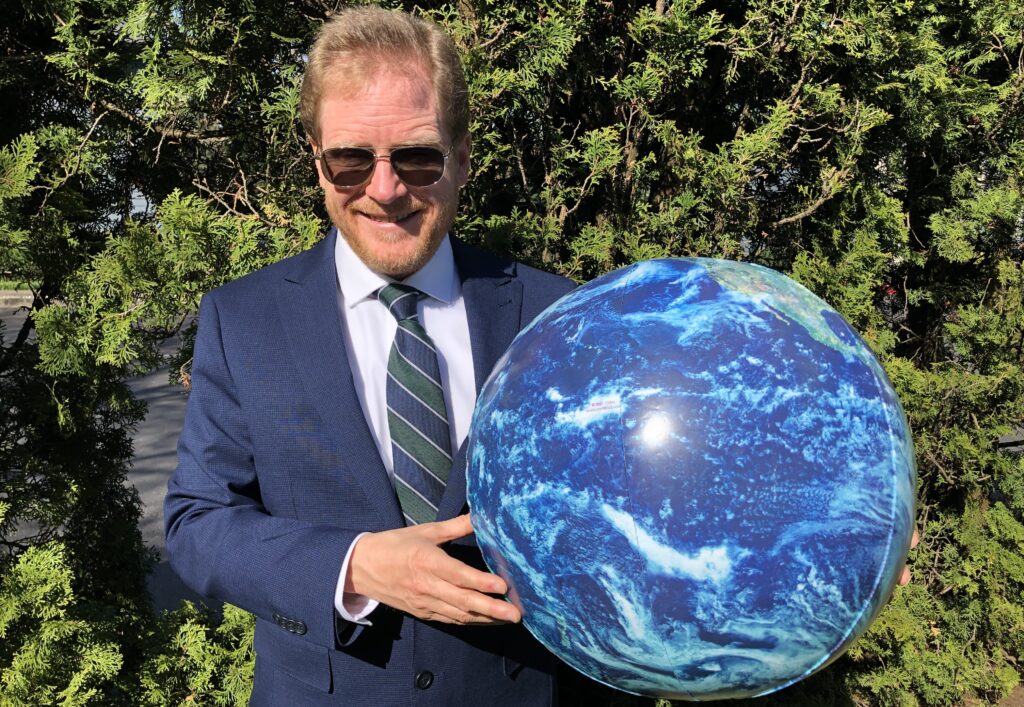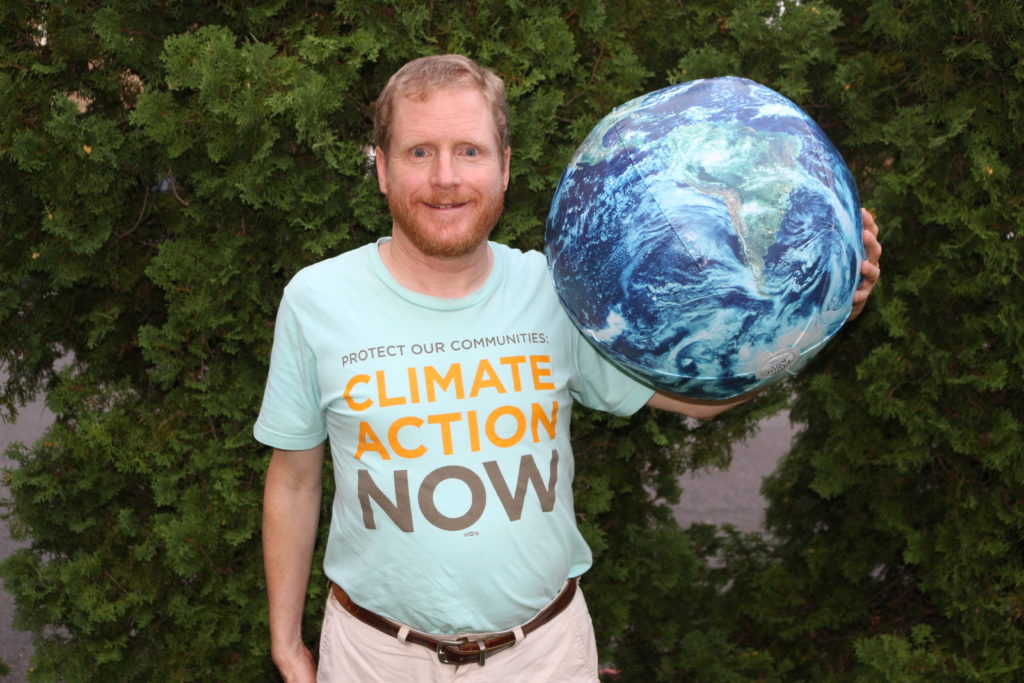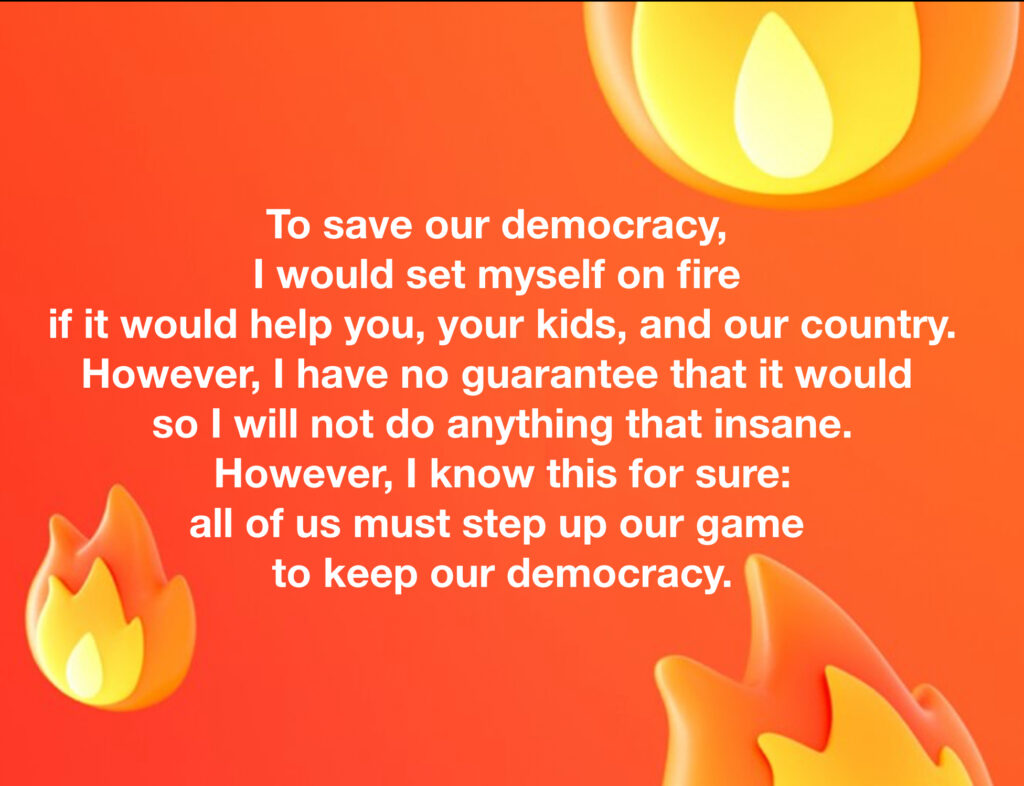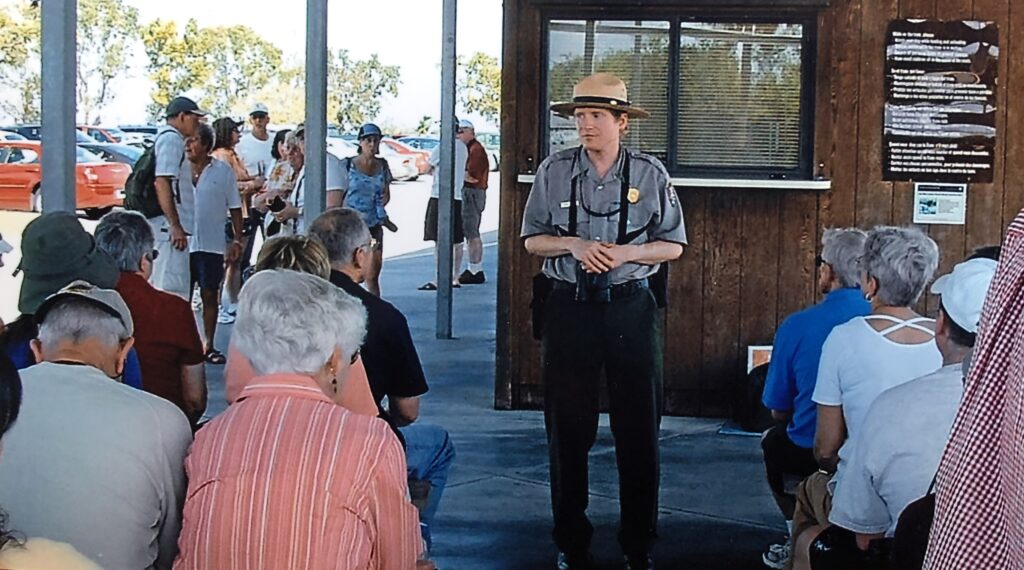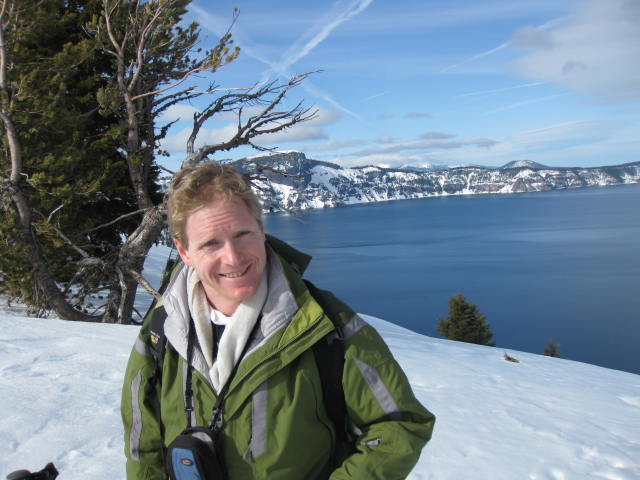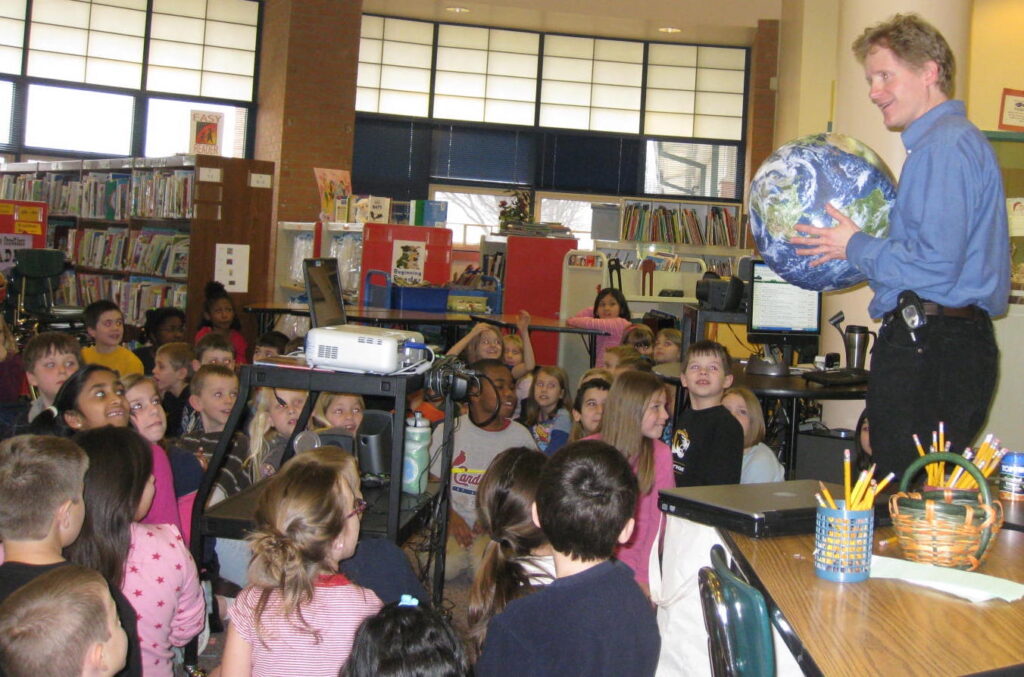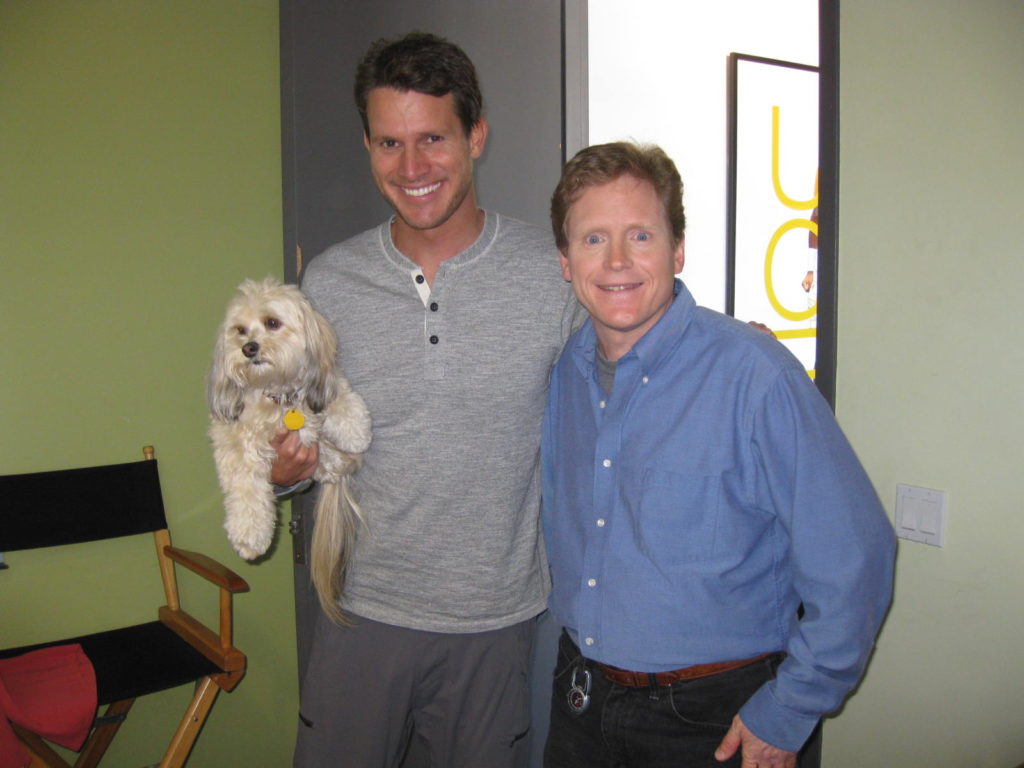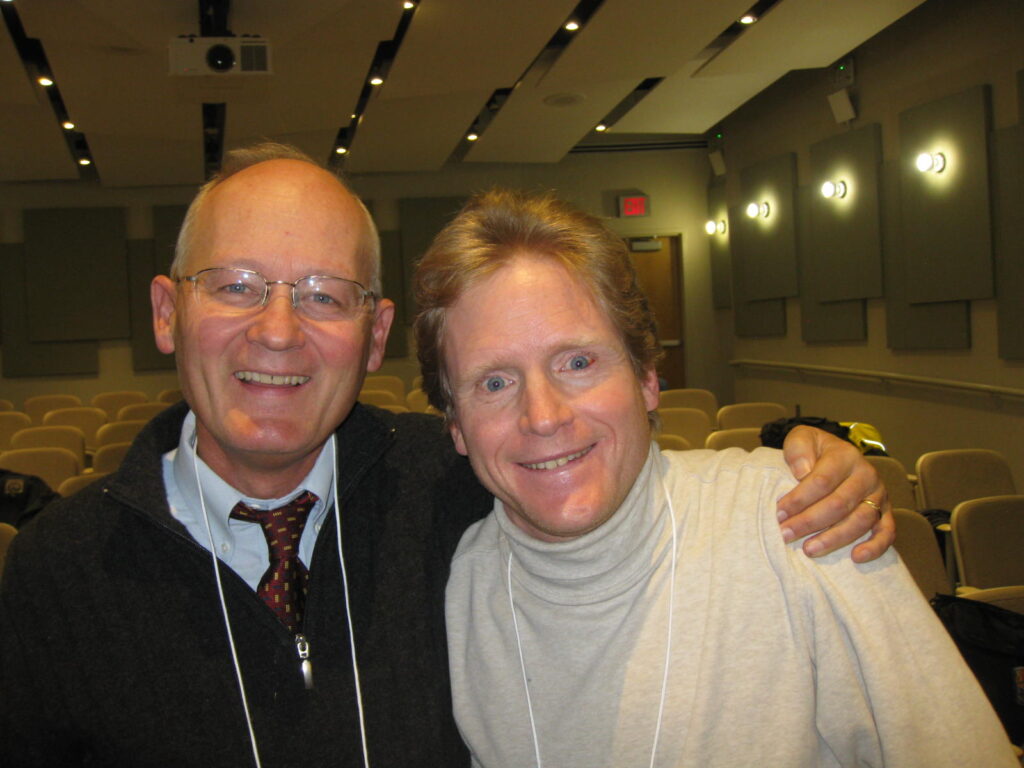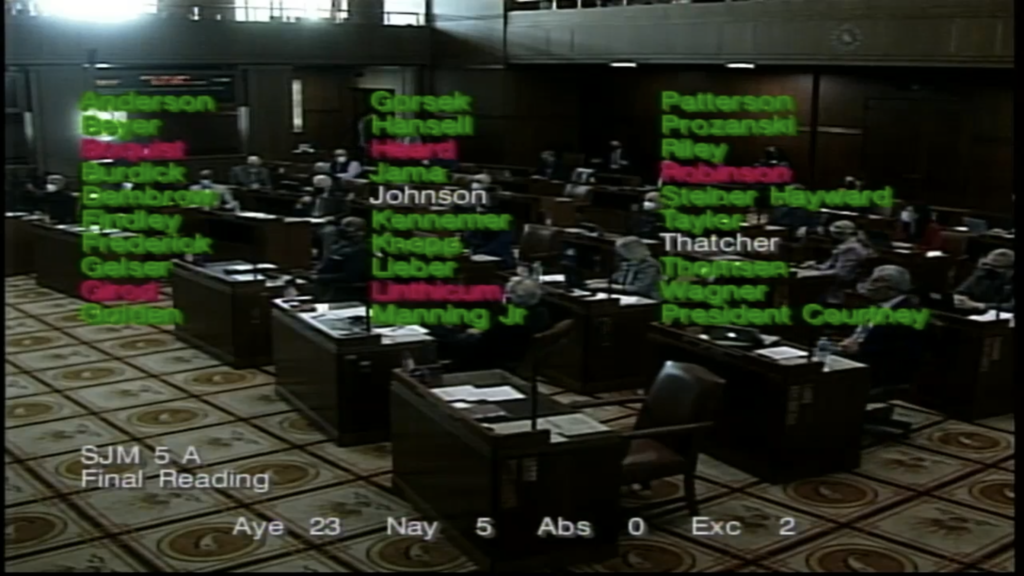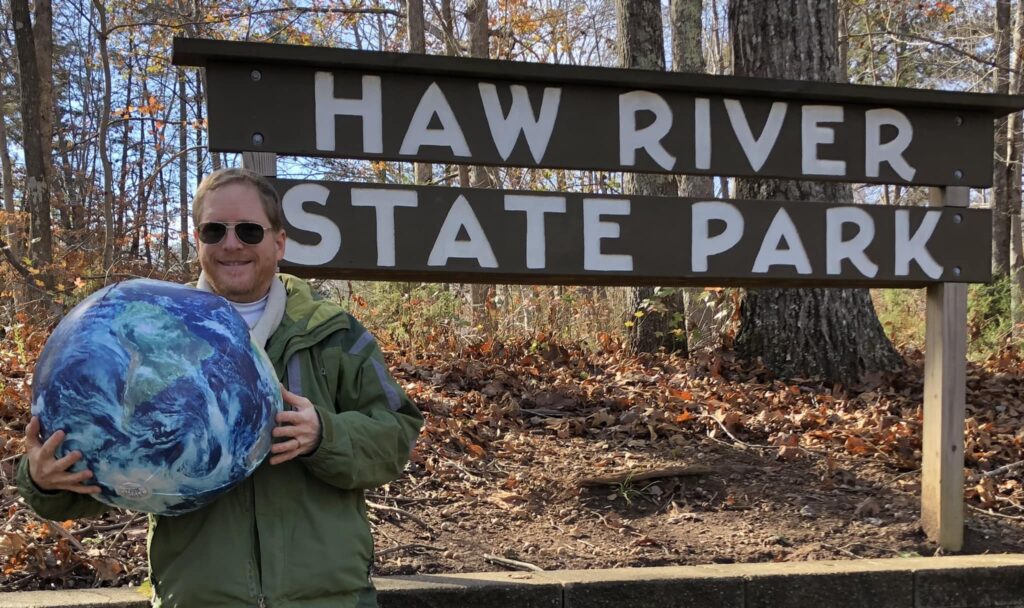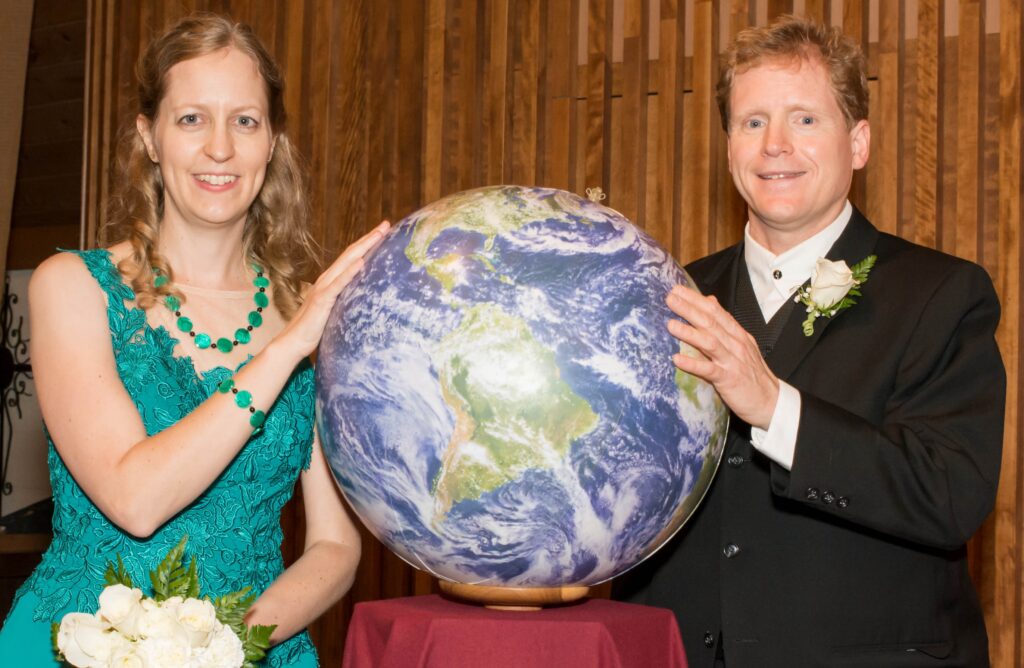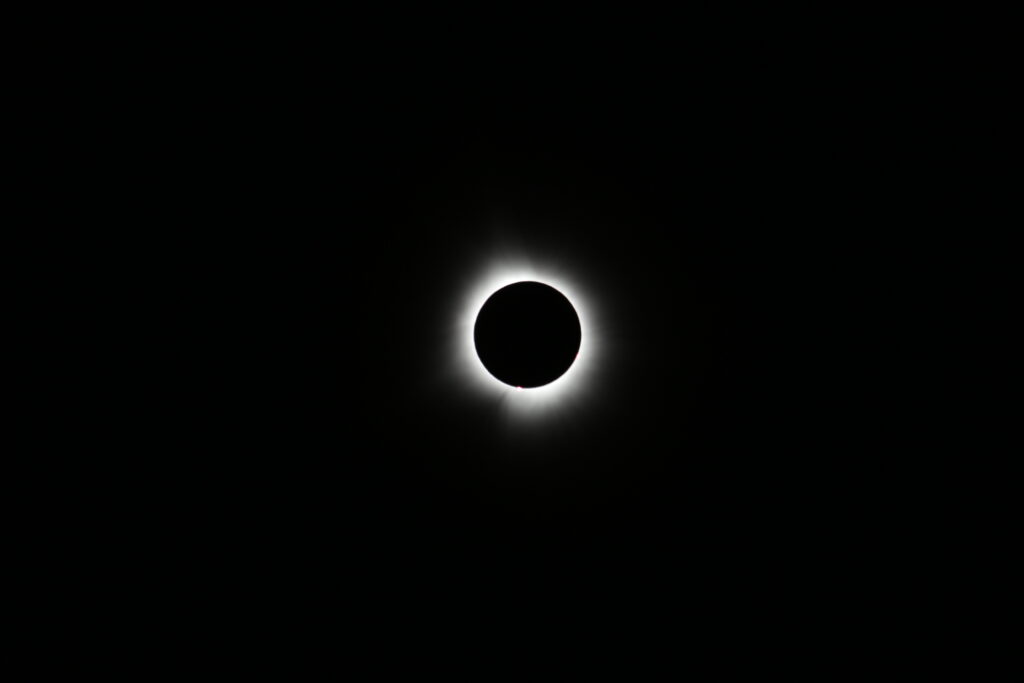
Two kinds of people exist in our world: those who have experienced a total solar eclipse and those who have not. It is that simple. You have either witnessed a total eclipse of the sun or not. No, if, ands, or buts. Seeing a partial solar eclipse does not count as impressive as they are. Words, including anything I write here, won’t do it justice. Any analogy I want to compare it with won’t do. I risk falling into clichés.
Seeing a Total Solar Eclipse possibly like seeing a live baseball game for the first time
The closet I can compare observing for a total solar eclipse is a May 2023 AARP Bulletin essay from legendary sportscaster Bob Costas, “Visiting Yankee Stadium with Dad.” It’s his reflection on “the first major league game I can recall. Over 6 decades later, it remains one of my most memorable.”
My mom mailed a hard copy of this subscription article to me that arrived in the mail recently. I write ‘hard copy’ loosely because she ripped the article out of the magazine so it arrived in three separate pages in no order. With those loose pieces of paper, trying to decipher the article from beginning to end felt like an archeologist trying to resemble an ancient treasure map. Or an income tax preparer trying to organize loose receipts from a shoebox for tax deductions.
For Costas, the actual game played that day was not significant. The Orioles won 7 to 2 over the Yankees. It was the experience spending time in the ballpark with his dad that day. Costas attested it to “Many fans of a certain age have likened walking for the first time up the tunnel leading to their seats to the moment when Dorthy is transported from black-and-white Kansas to Technicolor Oz. Like entering a different and, for a kid, enchanting world.”
Costas then paints a description of seeing the baseball field, the feeling of being in “a baseball cathedral…’The House that (Babe) Ruth Built’”, his dad teaching him how to keep score, and the fans exited the ballpark by way of the field. To top it off, Costas and his dad walked by Yankee Stadium’s famous Monument Park, which had monuments back then to Babe Ruth, Lou Gehrig, and their manager, Miller Huggins. The 7-year-old Costas cried when he saw those “monuments” thinking they were their cemetery headstones. His dad then did his best to change his mood by hoisting Bob on his shoulders as they bobbed along to exit.
That was 1959. Costas remembers it like it was yesterday. His dad died when Bob was 18 years old. Costas went on to broadcast many playoff and World Series games. His biggest regret was never taking his dad to be with him to one of the games he broadcasted. However, his son was at his side when he worked many of those baseball games. Costas attended thousands of games. But he recalls his first game at Yankee Stadium as a 7-year-old with his dad most fondly.
I grew up in St. Louis, Missouri, as a third generation fan of the St. Louis Cardinals major league base team. I enjoyed attending Cardinals baseball games as a kid. I even played for a little league baseball team around the time I was in first grade around 1974. Thus, I understand how Bob Costas fell in love with baseball.
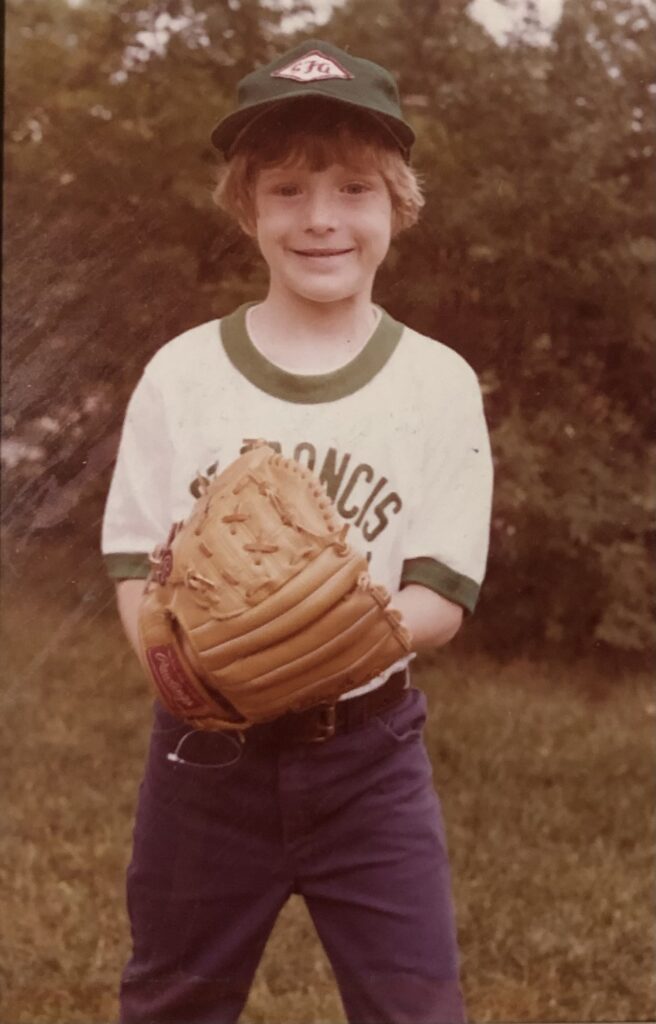
This is what I think seeing a total solar eclipse is like: a life changing moment like what Costas experienced watching at a baseball game with his dad for the first time.
My wife Tanya and I missing out on the Total Solar Eclipse in 2017
On August 21, 2017, a solar eclipse happened across the United States from northwestern Oregon to South Carolina. Tanya and I had many family members and friends who witnessed that solar eclipse in the zone of totality. In February 2017, Tanya and I moved permanently to Portland, Oregon. She accepted a job as a cytotechnologist in a nearby medical lab from where we live in northeast Portland. This was my last summer working as a seasonal naturalist ranger at Crater Lake National Park in southern Oregon. Both Tanya and I were outside of the area of the total eclipse. It literally passed between our locations.
At Crater Lake around 10:15 am, I looked up with special eclipse glasses to see the moon blocking most of the sun. I watched the partial eclipse from the second story balcony deck from my seasonal park housing. Looking around, everything looked normal. It was a smoky summer at Crater Lake from Oregon forest fires. The air smelled like a campfire and the outside visibility looked less than ideal for a clear day. A tinge of smoke lingered in the air making it harder to see the nearby mountains in the park, making everything look a bit orange. I did not start work until noon that day. While I watched from home how the surrounding world reacting to the eclipse, the TV blared CNN to see how areas across the U.S. encountered the total eclipse.
CNN TV crews showed spectators cheering in areas experiencing the full shadow of the moon. Sadly, some parts of the U.S. were overcast and could not see the moon blocking the sun, just grey clouds and everything getting darker. When the eclipse passed over Oregon, Crater Lake was not in the zone of totality. Outside my balcony deck, it looked like the orange haze dimmed slightly but not much. The park housing is near the main park road that visitors and staff use to drive through the park. During the partial eclipse, the road and the park became silent. It felt like visitors and employees wanted to contemplate the moment and experience the phenomenon, not driving their cars or talking loudly while the partial eclipse happened.
Tanya went outside her work to see the partial eclipse in Portland. She took photos of the unusual shadows on the ground of the impaired sunlight mostly blocked by the moon shining light through the leaves of the trees above her. Since we first started dating in 2013 and got married in 2015, we yearned to be together to experience events like that. It was sad we were separated by work to not be together to witness it in Portland, Crater Lake, or the zone of totality.
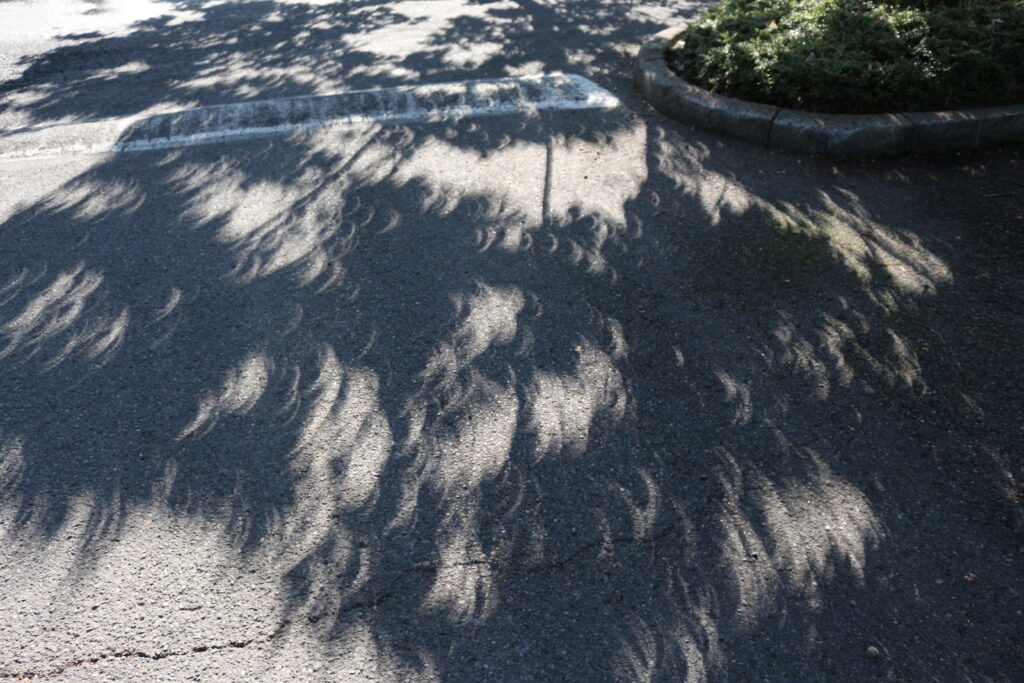
This was a different story for our families back in St. Louis, Missouri, which was the inside the area of the total solar eclipse. Tanya’s parents live the western suburbs, Creve Coeur. Their home was barely in the totality zone, so they drove to a secluded spot south to be in the center of the total eclipse. Tanya’s brother lived in the city of St. Louis, just outside of the total eclipse area. He drove to Tanya’s parents’ house to see the eclipse there with this dog.
My parents lived in south St. Louis County. Their house was positioned in the zone of totality. They decided to stay home to watch the eclipse. My younger sister Mary Frances and my brother-in-law Robb drove to my parents’ house to watch the total eclipse together. It was a typical hot and humid day outside in St. Louis. My dad told me afterwards that the temperature dropped several degrees during the total eclipse. It felt cold for him during the totality to be outside in shorts and a t-shirt. After the eclipse passed, my Dad frequently shared how their two cats seemed confused by the total eclipse. When my parents, sister, and brother-in-law went back inside, the cats had a bewildered look on their faces as to say, ‘What happened? Please tell us what happened? Is everything ok? Are you ok?’
I had fellow ranger friends at Crater Lake who took off work to drive to see the total solar eclipse that day. They all seemed to enjoy the experience. But they came back to Crater Lake with stories of intense traffic tie ups leaving the zone of totality after the eclipse. Some of them were stuck in their cars for hours waiting for the traffic to move.
Planning a Trip to St. Louis see the Total Solar Eclipse in April 2024
The stories good and bad intrigued me to see a full and total eclipse for myself if the opportunity happened. I noticed in the news in 2017 that the next full solar eclipse would be on April 8, 2024. This solar eclipse would have a different path than the 2017 eclipse. The 2024 eclipse U.S. path started from lower southwestern Texas, then traveled through the cities such as San Antonio and Dallas, touch the southeastern corner of Oklahoma, through the center Arkansas, especially the Little Rock area. The eclipse would then go through Southeastern Missouri and Southeastern Illinois. It would then continue through Indiana, Ohio, the Great Lakes Of Erie and Ontario, and then up the U.S. Canadian eastern border before exiting in Maine.
The town of Carbondale, Illinois piqued my interest because it would be one of the few U.S. towns in the path of the 2017 and 2024 total eclipses. Carbondale is a two-hour drive or 100 miles southeast of St. Louis. I started scheming so that Tanya and I could combine a trip to see the total solar eclipse with a visit to see our parents and families in St. Louis.

Even more, Tanya’s parents, Nancy and Rex, are excellent trip planners. I marveled at the trips Tanya and I took with them over the past 10 years to see family in Denmark, the Olympic peninsula in Washington state, and Yosemite National Park in California. In September 2023, my in-laws organized a trip for 14 of us, including 8 of Nancy’s Danish relatives, to meet in Seattle for a 10-day trip to go see Glacier National Park in Montana. On the way back from Glacier, we spent two days visiting North Cascades National Park in Washington state before returning to Seattle. Rex and Nancy had a detailed itinerary of the motel we would stay each day, where we would sightsee, picnic, and the restaurants where we would eat dinner each evening.
I was confident that if we flew to St. Louis, Tanya’s parents would know the best place to see the eclipse and they would gladly take us there as a family outing. It would be a budget trip to see the eclipse without worrying about expensive hotel reservations, rental cars, meals, etc. Rex and Nancy were excited we were coming to visit them. My parents were thrilled we would visit them. This eclipse was a good excuse to see family. In the worst case scenario that it could be totally overcast during the day of the total eclipse, at least we would spend a week with family.
Tanya’s parents would have probably gone to see the solar eclipse in southern Illinois anyway, regardless of our visit. Like I suspected, they researched the best place to see the total eclipse.
When we packed for the April 6-14, 2024 trip to St. Louis, I decided to pack my heavy but very sturdy 34 year old Bogen Tripod and our complex Canon EOS Rebel T5i digital camera Tanya’s parents gave us for Christmas in 2016. Since 2018, I exclusively used my iPhone 8 for photography. Tanya used the Canon to get the detailed photographs she liked to take. Over the years, Rex gave her as gifts zoom and wide-angle lenses for that Canon camera. Tanya enjoyed having extra lenses on our hikes and sightseeing exclusions to take quality photos.
A couple of years ago, Tanya switched to a smaller Canon EOS digital camera with an adapter to handle her three various lenses. The Canon EOS Rebel T5i camera was sitting on a shelf for a couple of years unused when I decided to take it on this trip. That camera was a gift from Rex and Nancy to both of us, but I never used that camera. It became Tanya’s camera. Suddenly, I needed to familiarize myself with that camera quickly to photograph this complex rare astronomical event. Bottomline line: I had no idea what I was doing with this camera.
When we arrived in St. Louis, I figured Tanya and Rex would quickly teach me how to use this camera to photograph the eclipse. In January 2024, I read an article in Astronomy advising first-time eclipse viewers to not try to photograph it. The writer urged a new eclipse chaser to just enjoy the first-time experience and worry about photographing the eclipse if they see it for a second or third time. Good advice to ponder. But full solar eclipses over the United States have only happened a couple times in my lifetime. I am doubtful if I will see another solar eclipse. Therefore, I wanted photos of this event, damn the consequences!
Tanya and I flew to St. Louis on Saturday, April 6, 2024. On Sunday, April 7th, Rex and Tanya took time to try to teach me how to use the Canon EOS Rebel T5i Camera. Rex went out of his way to create for me a lens filter that I could photograph the sun. The filter subtracts all the bright light so the sun looks like a bright orange spotlight with a black backdrop. It was a joy for me with new toys photographing the sun on that Sunday afternoon to practice taking photos for the solar eclipse the next day. Rex programed the camera with a quick shutter speed to minimize the image from looking shaky, fuzzy, or looking out of focus. At the same time, he set up the camera to have a slow enough shutter speed to draw in adequate light to capture the sun with the eclipse filter on the lens. Basically, we needed a Goldilocks shutter speed for me: fast enough to capture the sun going into the eclipse but slow enough to capture enough light.
I spent some time that Sunday afternoon practicing photos of the sun I got images that I liked. Some of my first photos of the sun were blurry. No worries! I kept practicing with the tripod and long lens to aim the camera at the sun to try to capture the glowing orange light bulb.
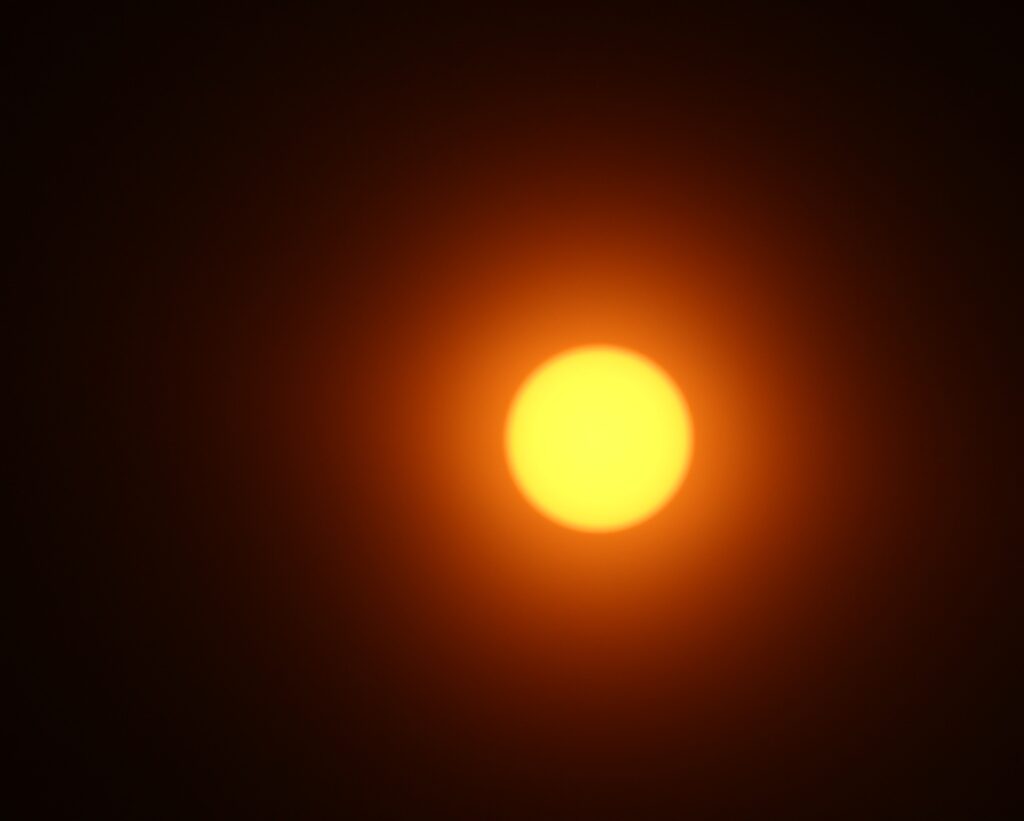
Monday April 8th was the big day to see the eclipse. I was as eager as a kid on Christmas morning to see this event. I figured there would be a lot of heavy traffic from St. Louis and elsewhere to southern Illinois to see the eclipse. The eclipse was projected to occur around the Carbondale area around 2 pm. I meekly asked my mother-in-law Nancy if we planned to leave early in the morning to beat the traffic. She firmly replied, “No, we are leaving around 9 am.”
She packed lunches for us. We did not pull out of the driveway until almost 10 am. It’s normally a two-hour drive to Carbondale, but it took us over three and a half hours to drive to the location where Nancy made the reservation. We ran into some traffic delays, road construction, and we got a bit lost with the GPS and maps trying to find the destination.
Nancy reserved parking and spaces for us at the Alto Vineyards in Alto Pass, Illinois. When we arrived around 1:30 pm, we saw hundreds of people in a carnival like atmosphere of music blaring, dancing, wine sipping, children playing with balls, and family groups sitting on blankets waiting for the eclipse to start. By the time we arrived, we had to park near the far end of the parking lot since most of the attendees arrived before we did. We grabbed our lunch bags, a blanket to lay on, folding chairs, my tripod, our cameras, and temporary eclipse safety glasses.
We found a secluded spot in this vineyard next to where some of the grapes grew. We saw lots of people dozens of yards from us, but we had plenty of space to feel like we could have our own conversations without anyone listening to us. Most of the attendees gathered close to the restaurant and bar. They probably wanted to enjoy the eclipse close to their family and friends. Their location was in proximity where they could order more wine, food, and other drinks.
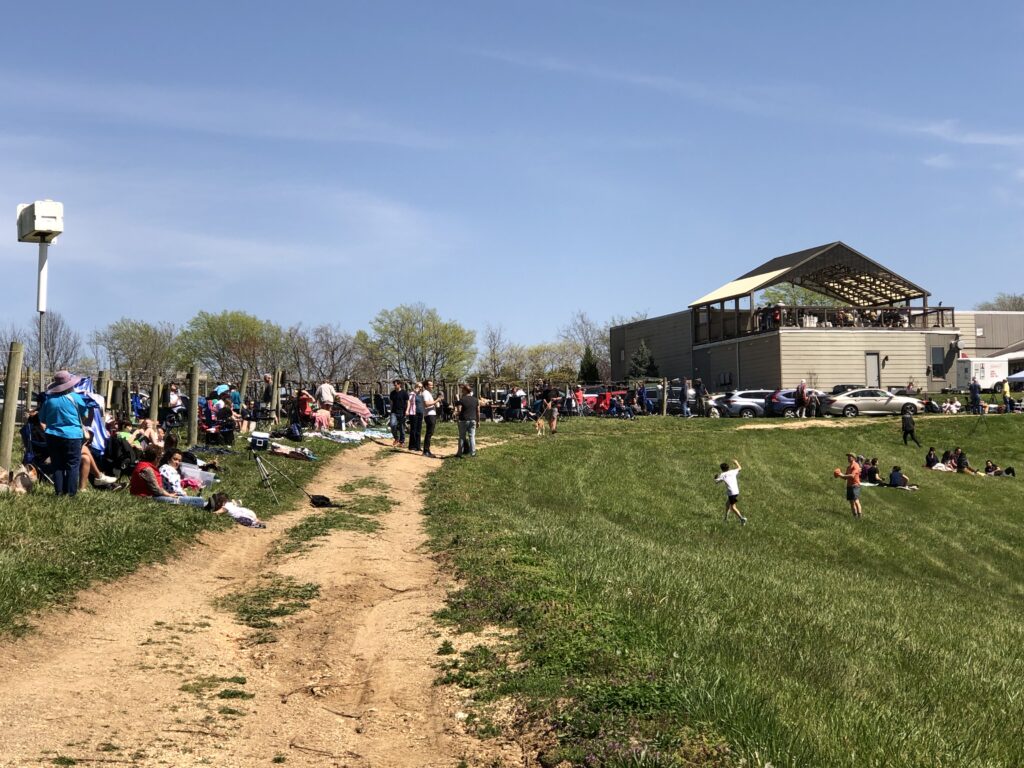
We arrived at our chosen spot just as the moon started first contact crossing over the sun. I hastily set up my tripod and mounted the elaborate Canon camera on it. I immediately noticed the tripod was not helpful. The sun was high in the sky for the middle of the day. The steep angle did not work to point my camera on the tripod at the sun to take photos. Plus, I was using a quick enough shutter speed so my images would not be fuzzy and out of focus. Somehow the Goldilocks setting Rex set up the day before was not locked in on the camera. Rex scrambled to help me as he set up his own camera and tripod for the eclipse. He then advised me to forget about using the tripod and just lie in the grass embankment to take photos. Lying flat on the ground would allow me to be in a steady enough position to take quality photos of the eclipse.
As usual, Rex’s photography tricks helped. I was now off to the races taking photos as the moon crossed about 25% across the sun. As the moon moved further across the sun, it looked like Pac-Man or a cookie with bigger bites taken out of it. As the moon further encroached across the sun, the crowd grew quieter in anticipation something magical was about to happen.
The partial eclipse looked very familiar to me since I saw one at Crater Lake National Park in 2017. When I worked as a naturalist guide in Everglades National Park from 1998 to 2002, I remember seeing a partial solar eclipse when I narrated one of the sunset boat tours. The partial eclipse happened just as the sun was about to set into the Gulf of Mexico. I glimpsed hundreds of sunsets dropping into the ocean while working in the Everglades. This partial eclipse sunset of the most memorable.
On April 8, 2024, as the moon acted like it was gobbling up the sun, I felt like I entered into a new and unknown territory. The moon’s advancement turned the sun into a crescent. Then just a tiny sliver of the sun showed. The stunning part was when the moon covered almost 99% of the sun. Yet, it still appeared like daylight was all around us. Maybe a bit dimmer. It looked like a normal day surrounding us and scanning the horizon. The outside appearance was like when a dark puffy cloudy on a sunny day moves in front of the sun and the brightness of the day is a tad less. That moment showed how powerful the sunlight is even when a small bit of sunshine comes through. It was a revelation how vital it is to use the eclipse safety glasses even when less than 1% of the sunlight hit the area around us. Even that miniscule amount of sunlight could do damage to the eyes without proper protection such as the eclipse safety glasses.
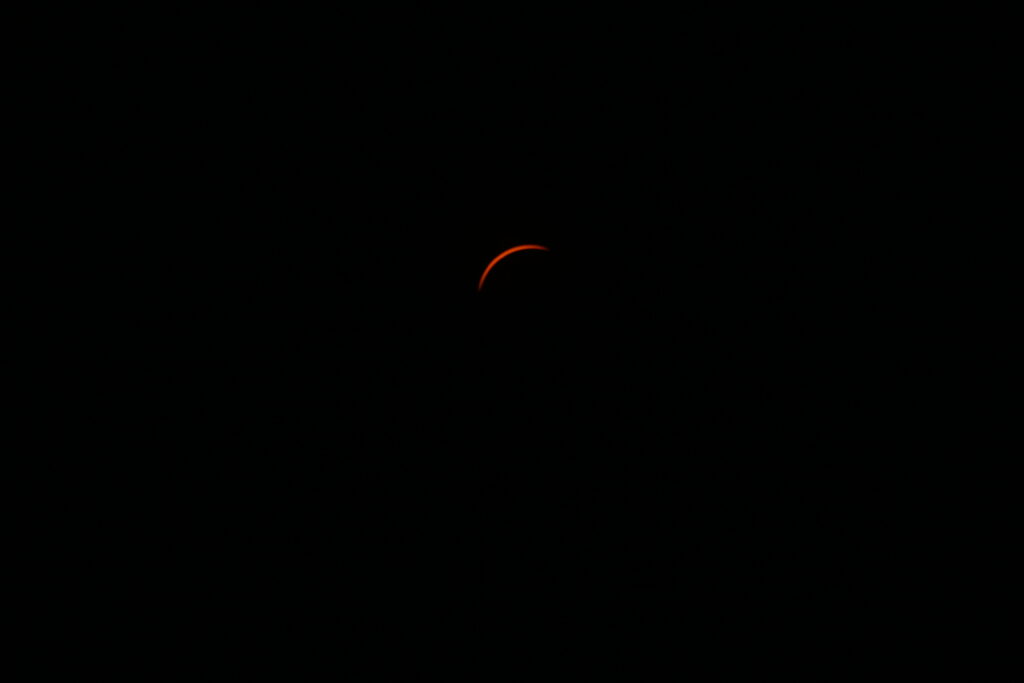
As the moon moved after closer to a solar totality eclipse, everyone at this vineyard grew quiet with anticipation. We all held our breath for what came next.
Then it occurred like a flip of a switch. The moon totally blocked out the sun. It became dark in a second, but not like midnight. It was more like an evening darkness a half hour after the sun set. The crowd let out a huge boisterous cheer like the moon hit a huge home run in a baseball game broadcasted by Bob Costas. Most people there, including Tanya and me, never saw a total eclipse before. We could not contain our excitement. The moon in this total cooperation with the sun put on this spectacle of show that made all of us huge fans of the moon.
Yes, the moon is incredibly beautiful when it is full or even half, quarter, three quarters, waning, waxing, etc. It is lovely to admire when it shines at night, dusk, dawn, or can be seen during the day. I previously saw a huge full moon rise behind Mt. Hood by the duck pond near the location where Tanya and I live in outer northeastern Portland. Several times at Crater Lake, I saw a full moon rise over the eastern side of the caldera as the sun set in the west. I viewed this while leading visitors to the summit on one of my sunset guided ranger hikes up the Watchman Peak.
At our park housing area at Crater Lake, I saw the full moon rise in the east behind a ridge with tall pine trees on Garfield Peak. A bit of moon light would peak between the trees like a spotlight. Then it would rise above the trees in a way that was reminiscent of the Steven Spielberg film E.T: The Extra-Terrestrial. When the large full moon rose above the pine trees at Crater Lake, I imagined Eliot, E.T, and Eliot’s friends riding their bikes in the sky across the full moon with music composer John Williams music soaring in the background.
Yet, this full eclipse on April 8, 2024, was way beyond any brilliant full moon. The moon outdid any performance I had seen it do before. As soon as totality happened, all of us took off our eclipse safety glasses to admire the show of the umbra. The umbra is defined as “The darkest part of the Moon’s shadow, within which the entirety of the Sun’s bright face is blocked.”
The moon now looked like a black hole with the bright white light of the sun flowing off the total darkness of it. I could not stop myself from taking numerous photos. The pearly glow of the sun’s corona was visible to me for the first time in my life. With my camera zoomed in on the total eclipse, I had some chromospheres show up on my photos. They are the thin, red-colored layer of solar atmosphere. They appear as tiny pinkish reddish dots on the edge of the moon blocking the sun. When we saw them during the eclipse we referred to them as solar flares for a lack of knowledge of the correct scientific term.
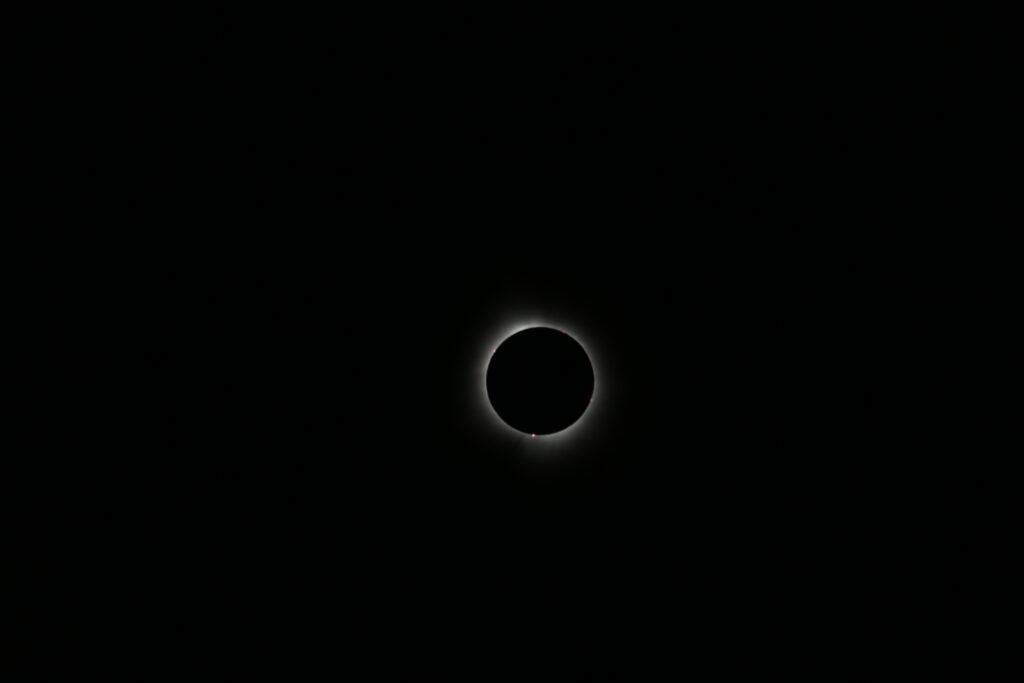
With the umbra causing a darkness around us, I could hear crickets starting to chirp, thinking it was nightfall. A buzz of conversation stirred in this huge crowd as the spectators shared a joyful celebration of this rare moment. They eagerly chatted with their family and friends astonished what they were witnessing together.
The sky was dark enough above us that a few evening stars began to appear. However, the horizon all around us looked like it was dusk. It looked like it could be daytime in the far distance while we briefly experience a brief midday night experience. This total eclipse only lasted about 4 and a half minutes. I made sure to lie in the grass next to my wife Tanya to take in this mystical moment we were experiencing together and may never experience again.
We then started seeing Bailey’s Beads, shafts of sunlight shining through deep valleys on the lunar limb (edge), they look like a series of brilliant beads popping. The sun became impatient getting blocked by the moon. It was not going to take this blockage much longer. The moon looked eager to separate from the sun and continue its path. Then we got the brief Diamond Ring phenomenon where more of the sun’s corona shines in a corner of the totality. It looked like a spectacular wedding ring that you would love to give to the person you want to spend the rest of your life. I felt like I scored a victory capturing a photo of this Diamond Ring.
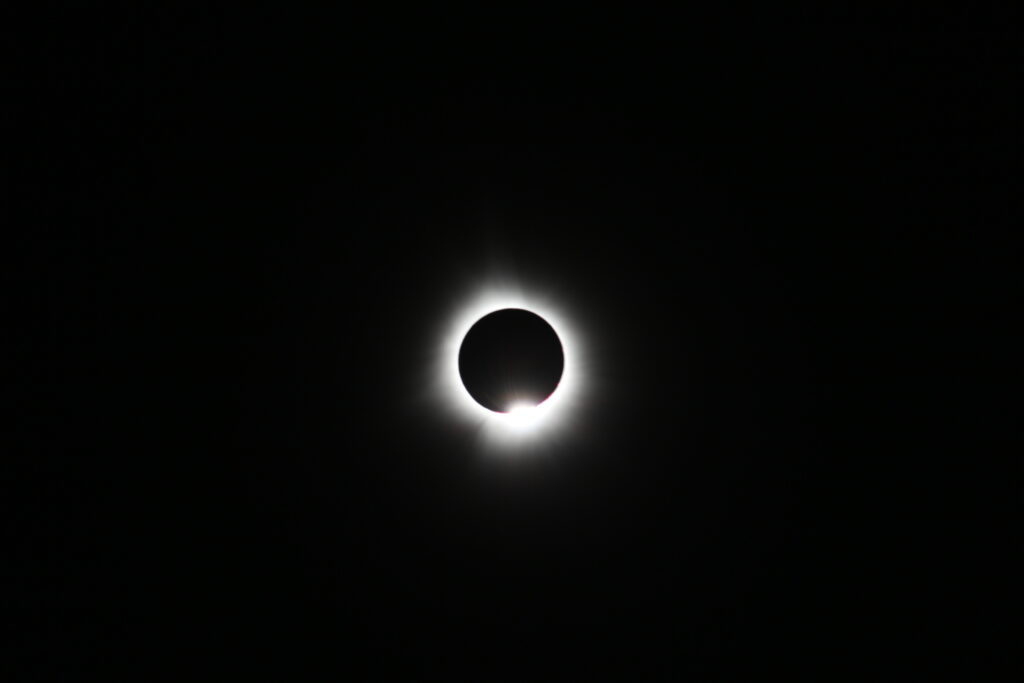
Diamond ring signals the end of the solar eclipse totality. Within a second, poof! The total eclipse of the sun was gone. It was over. We now were back to seeing just a tiny sliver of the sun. We grabbed our eclipse safety glasses fast so the suns fast approaching bright rays of light would not damage our eyes.
Many of the spectators, including Tanya and her parents, were now shuffling their feet and looking ready to pack up to leave. Not me! I wanted to stay as long as I could to take in the third contact stage where the moon slowly edges away from blocking the sun. I wanted to take in everything I saw and photograph the sliver of the sun grow into a crescent sun. Then from the crescent sun change into a quarter sun, then a Pac-Man looking sun, then a sun looking like a cookie with a smaller and smaller bite taken from it.
Finally, the moon covered a tiny portion of the sun. The moon and the sun decided that their mutual dance was over. They were on different paths and had different places to go. This very brief but spectacular close relationship was over. I still wanted to take everything in from this occasion. Tanya, her parents, and her parents’ friends who joined us were now back at the cars with all the items we brought with us. Part of me didn’t want to leave. I still wanted to sit there and absorb what I saw. It felt like a life changing experience for me. I did not want it to end.
Before I left this vineyard for good, I felt like the moon gave a masterful performance. I wanted it to take a bow and even do a curtain call. I swiftly gathered up my stuff, folding up my Bogen Tripod, putting Tanya’s Canon Camera back in the camera bag, and finishing the contents of my sack lunch. I hurriedly went back to the cars where the rest of the group gathered before they could realize that I was holding them back.
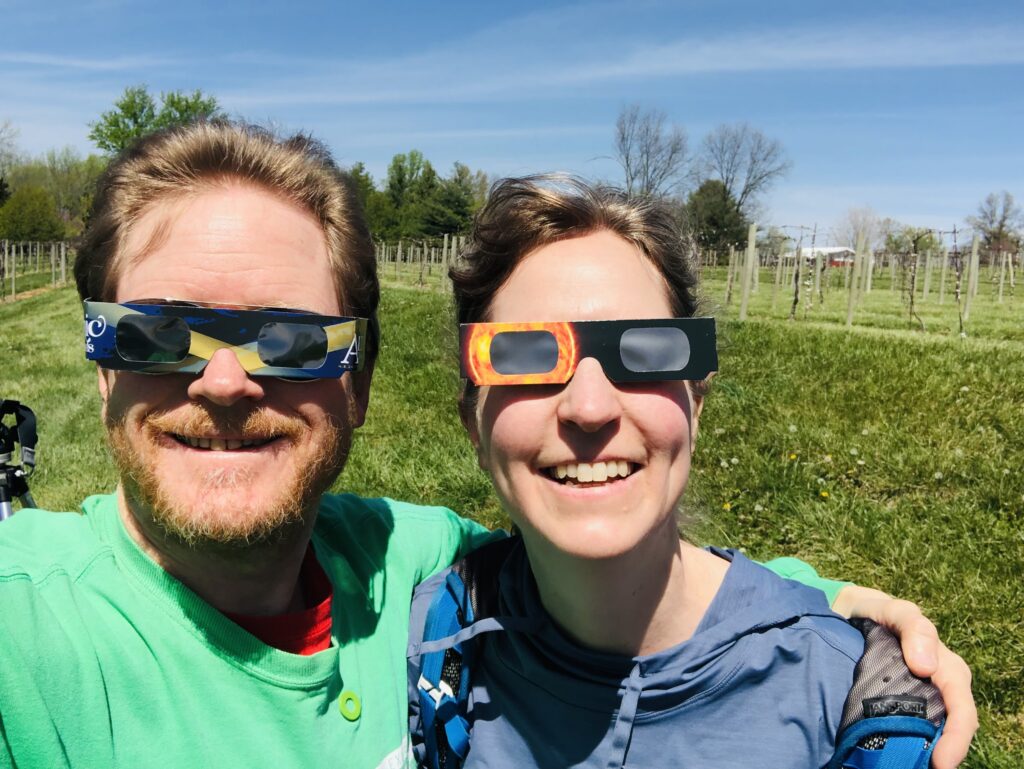
The Aftermath on my life of seeing the Total Solar Eclipse on April 8, 2024
The detailed conscientious planner that is my mother-in-law Nancy had a hike for us in a nearby state park for us to do next on this gorgeous spring April day. She picked a hike for us to try on the Tree Discovery Trail in the Trail of Tears State Forest. The trail was only .4 miles long. We then hiked on a C.C.C. Heritage Trail which connected to the Discovery Trail, which was another .4 miles. These trails had an elevation gain of 150 feet to the tops of these hills. The trees were mostly bare from their winter shedding of leaves. But leaves were sprouting on several of the trees showing the rejuvenation of life in spring was underway.
For Tanya’s parents, Tanya, and her parents’ friends, the hikes were welcome exercise after standing and sitting in one place for a couple of hours at the vineyard to witness the solar eclipse, plus the three and a half hour car ride to travel to see the eclipse. After the hikes around 4:30 pm, we decided to drive back to Rex and Nancy’s home in west St. Louis County. We hoped the hikes would help clear out the eclipse traffic heading back to St. Louis. We were wrong. We were trapped in long lines of very slow traffic on the state highways from Carbondale to St. louis. It is normally a two-hour drive, but it took us over three and a half hours as the vehicle parade of eclipse chasers crawled through rural southern Illinois back to St. Louis.
We didn’t make it home until after 8 pm. Since we return home so late, the best we could do for dinner was a Domino’s Pizza. With my love of pizza, including Domino’s, this capped off a perfect day for me to see a once in a lifetime event.
The next day, Tanya and I visited my dad who lives in an assisted care facility in St. Louis. I showed my photos from the solar eclipse from the previous day. He was impressed with my photos. He requested a copy of one of my photos of the solar eclipse totality with the white pearly glow of the sun’s corona dancing off the jet-black sphere of the moon blocking the full view of the sun. I mailed the 8×10 inch photo I printed to my dad in early June. During the summer, my mom framed the photo. It is now prominently displayed in my dad’s room.
I made second copy of that same photo I gave my Dad of the total solar eclipse. I framed the photo in the summer of 2024. It is now displayed in our guest bedroom in our home.
Tanya and I returned to Portland on April 14th. I was back to my busy life of climate organizing. I helped organize a Portland Chapter of Citizens’ Climate Lobby (CCL) forum for the candidates running to be a Representative for Oregon Congressional District 3. I called my friends and other climate organizations to invite them and almost 200 people attended this event. In late April, I got a temporary job as a field organizer for East County Rising (ECR) knocking on doors in Gresham and the east Portland area to urge voters to support local Democratic legislative candidates. This job ran until the Oregon primary election on May 21st.
In June, I traveled to Washington D.C. to attend the CCL Conference and Lobby Day to meet with Congressional staff at their Washington D.C. offices to urge them to support strong climate legislation. From the end of July to the November 5th election, I worked again as an ECR field organizer to urge voters to support local Democratic candidates who were strong for climate action.
On Thanksgiving, Tanya and I flew back to St. Louis for nine days to visit with her parents and my parents for an early Christmas celebration. From January 5-11, 2025, Tanya and I flew to the Big Island of Hawaii for a vacation to go hiking, swimming at beach, sightseeing, and stay with friends that I once worked with at Crater Lake and the Everglades.
Much happened since the April 2024 trip to see the total solar eclipse. Over the last five years, I had many peak and low moments as a climate organizer. At times, I felt so discouraged that I wanted to quit. However, that solar eclipse trip showed me the beauty to be alive to see a once in a lifetime experience. It reminded me to go for my dreams and aspirations. It challenged me to make the most of out of life and strive to make a difference with my life.
We live on a magnificent planet to witness wonders like a total solar eclipse. Bob Costas still remembers his dad taking him to see a baseball game at Yankee Stadium when he was 7 years old. Costas recalls it as one of the most memorable experiences of his life. This April 7, 2024 memory watching the total solar eclipse with stay with me for the rest of my life. It renewed and uplifted my spirit to roll up my sleeve to take more climate action. I hope you will seek out experiences like this so you can make a difference caring for our glorious planet.
